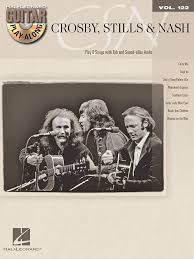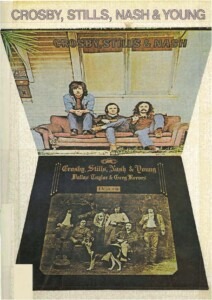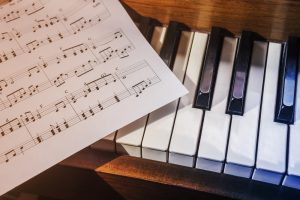Table of Contents
Come join us now, and enjoy playing your beloved music and browse through great scores of every level and styles!
Can’t find the songbook you’re looking for? Please, email us at: sheetmusiclibrarypdf@gmail.com We’d like to help you!

Best Sheet Music download from our Library.

Please, subscribe to our Library.
If you are already a subscriber, please, check our NEW SCORES’ page every month for new sheet music. THANK YOU!
Remembering David Crosby, born on this day in 1941 (1941-2023).

David Crosby: The Maverick Voice of Harmony – An Exhaustive Exploration
David Van Cortlandt Crosby (August 14, 1941 – January 18, 2023) was far more than a musician; he was a force of nature, a complex and contradictory artist whose soaring harmonies, adventurous chord structures, and unflinching honesty left an indelible mark on the landscape of popular music. His journey spanned over six tumultuous decades, weaving through folk, rock, psychedelia, and jazz fusion, marked by towering artistic achievements, profound personal struggles, and an enduring, unmistakable voice – both literally and figuratively. This exploration delves deep into his life, music, innovations, and legacy.

Browse in the Library:
Or browse in the categories menus & download the Library Catalog PDF:
I. Biography: From Privilege to Counterculture Icon
Born into privilege in Los Angeles (his father was Oscar-winning cinematographer Floyd Crosby), David’s early life was comfortable but emotionally complex. Drawn to music early, he was captivated by folk artists like The Weavers and later jazz, particularly Miles Davis. Dropping out of college, he immersed himself in the burgeoning Greenwich Village folk scene in the early 1960s. His first notable group was The Les Baxter Balladeers, but it was joining The Byrds in 1964 that catapulted him to fame.

As a founding member alongside Roger McGuinn, Gene Clark, Chris Hillman, and Michael Clarke, Crosby was instrumental in shaping their revolutionary “jingle-jangle” folk-rock sound. He contributed significantly as a rhythm guitarist, harmony vocalist, and increasingly as a songwriter. However, his strong opinions, burgeoning ego, and diverging musical interests (pushing towards jazz and psychedelia) led to increasing friction. His controversial on-stage political rants and dissatisfaction culminated in his firing from The Byrds in late 1967.
Adrift but creatively charged, Crosby’s path intersected fatefully with Stephen Stills (ex-Buffalo Springfield) and Graham Nash (ex-The Hollies) at Joni Mitchell’s house in 1968. The instant, almost supernatural, blend of their voices – Crosby’s reedy, slightly nasal high tenor, Stills’ powerful blues-rock baritone, and Nash’s pure, sweet pop tenor – created something magical. Crosby, Stills & Nash (CSN) was born. Their self-titled 1969 debut was a landmark, defining the softer, harmony-rich side of the Woodstock generation. The addition of Neil Young later that year, forming Crosby, Stills, Nash & Young (CSNY), created a volatile supergroup that reached even greater artistic and commercial heights with “Déjà Vu” (1970) and the incendiary live album “4 Way Street” (1971).

The 1970s were a period of immense success for CSN(Y), but also marked the beginning of Crosby’s long, public descent into drug addiction (primarily cocaine and heroin). His behavior became increasingly erratic, impacting recording sessions and tours. Despite flashes of brilliance on subsequent CSN/CSNY albums and solo efforts like “If I Could Only Remember My Name” (1971), his productivity and reliability plummeted. Legal troubles mounted, culminating in a prison sentence in Texas in 1985-86 for drug and weapons offenses. This period nearly destroyed him.
His release, facilitated by fellow musicians financially guaranteeing his bail for a final chance, marked a profound turning point. A life-saving liver transplant in 1994 (funded by Phil Collins) granted him a literal new lease on life. He embraced sobriety and experienced a remarkable late-career renaissance. He toured relentlessly with various CSN(Y) configurations (though relationships, particularly with Young, remained fractious), released critically acclaimed solo albums, and formed the jazz-inflected CPR (Crosby, Pevar & Raymond) with his son James Raymond and guitarist Jeff Pevar. His creative output in his final two decades was arguably as prolific and inspired as his early peak. He died peacefully in 2023 at 81.
II. Music Style: The Architect of Intricate Soundscapes
Crosby’s musical style is instantly recognizable yet difficult to pigeonhole, built on several key pillars:
- Harmony Vocals (The Voice): This was his superpower. His high tenor wasn’t conventionally “pretty” – it had a distinctive reedy, slightly sharp-edged quality – but it was incredibly expressive and cut through any mix. He possessed an innate understanding of complex vocal harmony. His parts weren’t just high; they were often unexpected, weaving dissonant extensions (7ths, 9ths, 11ths) and suspensions into lush tapestries. He was the essential harmonic glue in The Byrds and the soaring, sometimes unsettling, top voice in CSN(Y). His harmonies were conversations, not just accompaniment.
- Jazz-Inflected Harmony & Chord Progressions: Crosby was deeply influenced by jazz harmony. He moved far beyond simple folk and rock triads. His compositions are renowned for their:
- Extended Chords: Heavy use of major 7ths, minor 7ths, 9ths, 11ths, 13ths, and suspensions (sus2, sus4).
- Modal Interchange: Borrowing chords from parallel modes (e.g., using a minor iv chord in a major key, as in “Guinnevere”).
- Non-Functional Harmony: Progressions that prioritize beautiful, unexpected sonorities over traditional functional movement (V-I, ii-V-I). Chords often move in parallel motion or slide chromatically.
- Open Tunings: He frequently used altered guitar tunings (often inspired by Joni Mitchell), which facilitated unique chord voicings and resonant drones. Tunings like CGCGCD or variations became signatures, allowing rich, ringing open strings and complex fingerings difficult in standard tuning. Examples: “Guinnevere,” “Deja Vu,” “Tamalpais High (At About 3).”
- Complex Progressions: Listen to the intro to “Deja Vu” (Dmaj7 – F#m7 – Bm7 – E7#9 – Amaj7) or the cyclical, haunting changes of “Guinnevere” (Cmaj7 – Em7 – Am7 – D7#9 – Gmaj7 – Bb13 – Ebmaj7 – Abmaj7 – Dbmaj7 – F#m7b5 – B7b9 – Emaj7). These are not your average rock changes.
- Rhythmic Fluidity: While capable of driving rock rhythms (e.g., “Almost Cut My Hair”), Crosby often favored looser, more flowing, almost rubato feels, especially in his ballads. This reflected jazz and folk influences, creating space for vocal and harmonic exploration. His rhythm guitar playing was often textural and chordal rather than driving.
- Lyrical Themes: Crosby was a fiercely intelligent and often political songwriter. His lyrics explored:
- Social & Political Commentary: “Wooden Ships” (apocalypse/escape), “Long Time Gone” (RFK assassination), “What Are Their Names” (corporate/political power).
- Spirituality & Transcendence: “Deja Vu,” “Music Is Love,” “Laughing” (referencing George Harrison’s encounter with Maharishi Mahesh Yogi).
- Personal Relationships & Vulnerability: “Guinnevere,” “Traction in the Rain,” “Carry Me.”
- Nature & Cosmic Wonder: “Tamalpais High,” “The Lee Shore” (unreleased Byrds track, later CSNY), much of his later solo work.
- Unflinching Self-Examination: His later work is remarkably candid about his past failures, addiction, mortality, and gratitude (“Radio,” “Ships in the Night,” “Rodriguez for a Night”).
III. Groups: The Crucibles of Sound
- The Byrds (1964-1967): The launchpad. Crosby contributed harmonies, rhythm guitar, and key songs (“Why,” “Lady Friend,” co-wrote “Eight Miles High” – his jazz influence evident in its improvisational sections and complex changes). He honed his harmony skills and began pushing boundaries.
- Crosby, Stills & Nash (1969-Present, intermittently): The defining harmony group. Their blend was revolutionary. Crosby provided crucial songs (“Guinnevere,” “Long Time Gone,” “Wooden Ships” with Stills and Paul Kantner), intricate harmonies, and a distinct countercultural edge. Their sound epitomized California folk-rock.
- Crosby, Stills, Nash & Young (1969-1970, 1973-1974, 1988, 1999-2000s, intermittently): The volatile supergroup. Young added raw rock power and songwriting genius. Crosby thrived in the creative tension, contributing “Deja Vu,” “Almost Cut My Hair,” and co-writing “Ohio.” The live energy was unparalleled, but the internal dynamics were famously unstable.
- CPR (Crosby, Pevar & Raymond) (1997-2004): His post-transplant passion project with his biological son James Raymond (keyboards) and Jeff Pevar (guitar). Leaned heavily into jazz fusion, intricate improvisation, and complex arrangements. Highlighted Crosby’s renewed creativity and featured stunning musicianship (“Morrison,” “Rusty and Blue,” “Map to Buried Treasure”).
- The Lighthouse Band (2016-2023): His final, prolific touring and recording unit featuring Michael League (Snarky Puppy), Becca Stevens, and Michelle Willis. Explored sophisticated jazz-inflected folk and rock, showcasing Crosby’s voice in a fresh, supportive context and yielding excellent albums (“Lighthouse,” “Here If You Listen”).
IV. Improvisational Licks and Guitar Approach
Crosby was not a virtuoso lead guitarist in the traditional blues-rock sense. His genius lay elsewhere:
- Textural Rhythm Guitar: In CSN(Y), he provided rich, complex chordal textures, often using open tunings for resonance and unique voicings. His playing was atmospheric, creating harmonic beds for Stills/Young solos and vocal harmonies.
- Vocal Improvisation: His voice was his primary improvisational instrument. He would weave intricate, often dissonant harmony lines spontaneously, especially live with CSN(Y). Listen to live versions of “Wooden Ships” or “Carry On” for his vocal ad-libs weaving around the main melodies.
- CPR & Lighthouse Band Improv: In these later bands, Crosby embraced instrumental improvisation more fully. While not taking extended solos himself, his compositions (often co-written with Raymond/League) provided frameworks for sophisticated group improvisation, blending jazz, rock, and world music elements. Guitarists like Pevar and League soloed extensively over Crosby and Raymond’s complex harmonic structures.
- Guitar Solos (Rare but Distinctive): When he did take solos (e.g., the outro of “Almost Cut My Hair”), they were often raw, emotional, and melodic rather than technically flashy, reflecting his vocal phrasing.
V. Chord Progressions and Music Harmony: The Jazz-Folk Alchemist
Crosby’s harmonic language is his most significant technical contribution to rock music. He brought a jazz sensibility to the folk-rock format:
- “Guinnevere”: A masterpiece of non-functional harmony. Primarily in E minor, but constantly shifting through unexpected major 7ths and altered dominants. The opening sequence (Em – Am7 – D7#9 – Gmaj7) immediately establishes its unique flavor. It uses parallel movement and chromatic bass lines to create a dreamlike, modal feel.
- “Deja Vu”: Features a hypnotic, cyclical progression in D major that avoids a traditional tonic resolution for much of the verse, using extensions and chromaticism (Dmaj7 – F#m7 – Bm7 – E7#9 – Amaj7). The chorus provides a brief, grounding resolution.
- “Traction in the Rain”: Built on gentle, open-tuned arpeggios with lush extended chords (maj7, add9, sus4) creating a warm, melancholic atmosphere.
- “Tamalpais High (At About 3)”: Characterized by its open CGCGCD tuning, allowing ringing open strings and complex voicings that create a spacious, almost ambient texture.
- “Morrison” (CPR): Showcases his late-period jazz fusion influence, with sophisticated chord changes, shifting meters, and space for improvisation over complex harmonic terrain.
- Use of Modal Interchange: Frequently borrowed chords from parallel minor/major keys (e.g., the minor iv chord in a major key progression for a poignant effect).
- Cluster Chords & Dissonance: Not afraid to use close intervals and dissonant extensions within chords to create tension and unique colors, often resolving in unexpected ways.
VI. Influences: A Tapestry of Sound
- Jazz: Miles Davis (especially his modal period), John Coltrane, Thelonious Monk (harmonic complexity).
- Folk: The Weavers, Pete Seeger, Bob Dylan, traditional folk ballads.
- Classical Music: Impressionist composers like Debussy and Ravel (color, harmony, atmosphere).
- Rock & Roll: Early rock pioneers, The Beatles (arrangement, studio experimentation).
- Songwriters: Joni Mitchell (profound influence on his guitar tunings and harmonic approach), Leonard Cohen.
- World Music: Incorporated subtly, especially in later work (CPR, Lighthouse Band).
VII. Legacy: The Enduring Resonance
David Crosby’s legacy is multifaceted and profound:
- Harmonic Innovator: He fundamentally expanded the harmonic vocabulary of rock and folk music, introducing jazz complexities in an accessible and beautiful way. Countless songwriters absorbed his use of extended chords and unconventional progressions.
- Vocal Harmony Architect: The CSN(Y) blend remains one of the most iconic and influential sounds in popular music history. He redefined the role and potential of harmony vocals in a rock context.
- Songwriter of Depth: His best songs (“Guinnevere,” “Deja Vu,” “Wooden Ships,” “Long Time Gone,” “Laughing”) are timeless explorations of love, loss, politics, spirituality, and the human condition, characterized by poetic lyrics and sophisticated structures.
- Countercultural Icon: He embodied the idealism, experimentation, and political engagement of the 1960s and 70s counterculture, both in his music and his life (for better and worse).
- The Survivor & Late Bloomer: His story of redemption and prolific late-career resurgence after near self-destruction is inspirational. Albums like “Croz,” “Lighthouse,” and “Sky Trails” stand proudly alongside his early classics.
- The Uncompromising Voice: He was famously outspoken, opinionated, and difficult, but also fiercely loyal to his art and unafraid of vulnerability in his later songwriting. He never stopped searching musically.
- Influence: His influence echoes in artists ranging from Fleet Foxes, Bon Iver, and My Morning Jacket (harmonies, atmosphere) to more adventurous singer-songwriters exploring complex harmony (e.g., Sufjan Stevens, Radiohead).
VIII. Major Works and Discography Highlights
- With The Byrds: Mr. Tambourine Man (1965), Turn! Turn! Turn! (1965), Fifth Dimension (1966), Younger Than Yesterday (1967), The Notorious Byrd Brothers (1968 – contributed but fired during recording).
- Crosby, Stills & Nash: Crosby, Stills & Nash (1969), CSN (1977), Daylight Again (1982), Live It Up (1990), After the Storm (1994).
- Crosby, Stills, Nash & Young: Déjà Vu (1970), 4 Way Street (1971 – live), American Dream (1988), Looking Forward (1999).
- Solo:
- If I Could Only Remember My Name (1971) – A psychedelic folk-jazz masterpiece.
- Oh Yes I Can (1989) – Strong comeback post-prison.
- Thousand Roads (1993) – Featuring hit “Hero” (co-written with Phil Collins).
- Croz (2014) – Start of late-career renaissance.
- Lighthouse (2016) – With The Lighthouse Band.
- Sky Trails (2017) – Eclectic blend.
- Here If You Listen (2018) – With Lighthouse Band.
- For Free (2021) – Final studio album.
- With CPR: CPR (1998), Live at the Wiltern (1999), Just Like Gravity (2001).
- Collaborations: Significant contributions to projects by Joni Mitchell, Jackson Browne, James Taylor, Phil Collins, David Gilmour, others.
IX. Most Known Compositions and Performances
- Compositions (Solo/Co-writes):
- “Guinnevere” (CSN)
- “Deja Vu” (CSNY)
- “Almost Cut My Hair” (CSNY)
- “Long Time Gone” (CSN)
- “Wooden Ships” (CSN/Crosby, Stills, Kantner – also Jefferson Airplane)
- “Laughing” (solo/CSN)
- “Cowboy Movie” (solo)
- “What Are Their Names” (solo/CSNY)
- “Music Is Love” (solo)
- “The Lee Shore” (unreleased Byrds/CSNY live staple)
- “Morrison” (CPR)
- “Radio” (late solo)
- Iconic Performances:
- Woodstock 1969 (CSNY’s second ever live performance).
- The “Déjà Vu” album sessions.
- “4 Way Street” live recordings (especially “Almost Cut My Hair,” “The Lee Shore,” “Triad”).
- CSNY 1974 Tour (documented on various bootlegs, peak intensity).
- Live renditions of “Guinnevere” throughout his career.
- His powerful vocal performance on Joni Mitchell’s “Woodstock” (studio version).
- Intimate solo performances in his later years showcasing his voice and guitar mastery.
David Crosby: The Unfinished Chord
David Crosby lived a life of extremes: dazzling creativity and self-destructive chaos, profound harmony and bitter discord, towering ego and deep vulnerability. He was a flawed genius, a walking contradiction, and an undeniable musical pioneer. His voice, both literal and harmonic, introduced a new level of sophistication and emotional depth to popular music.
He fearlessly blended folk intimacy, rock energy, and jazz harmony, creating a soundscape uniquely his own. Despite the turbulence, his passion for music never wavered. His late-career resurgence stands as a testament to the enduring power of artistic spirit and redemption.
David Crosby didn’t just sing harmony; he lived it in all its complex, dissonant, and ultimately resolving beauty. His music, a rich tapestry woven with threads of light and shadow, continues to resonate, challenge, and inspire, ensuring that his unmistakable voice echoes long into the future. He remains an essential, irreplaceable chord in the great song of American music.
